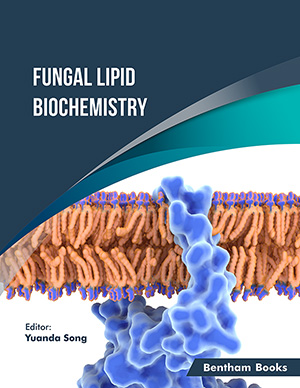Abstract
Fatty acids, in terms of their chemical structure, are aliphatic
monocarboxylic acid that represents the most abundant class of lipids in nature. The
major roles of fatty acids in the biological system are they constitute the building
blocks of cell membranes, serve as reservoirs of energy, and their derivatives act as
signaling molecules with various effects and functions. The type and composition of
fatty acids vary from organism to organism. Recent research has revealed that cellular
fatty acid profiles can be utilized to distinguish and identify yeast and yeast-like
organism genera, species, and strains. Fatty acids commonly range from C:14 to C:20,
and are predominant and most common in all organisms. Palmitic acid is the
predominant saturated fatty acid of most organisms, and oleic, linoleic, and linolenic
acids are the major unsaturated acids. Furthermore, several fungi have been suggested
as potential sources for biodiesel production. As such, this chapter will focus on fatty
acid metabolism in fungi and its characteristics that will broaden the fatty acid
metabolism in fungi biology.
Keywords: Fatty acids, Fungi, Fatty acid biosynthesis, Fatty acid degradation, Regulation of fatty acid synthesis, Unusual fatty acids.






















